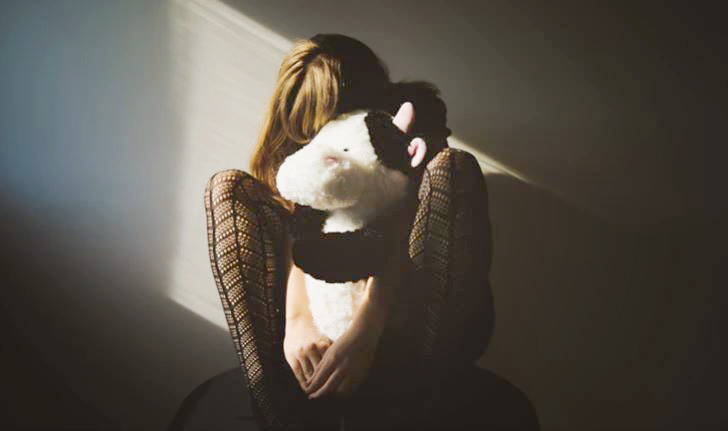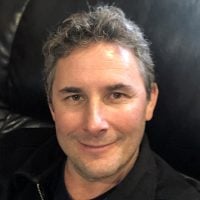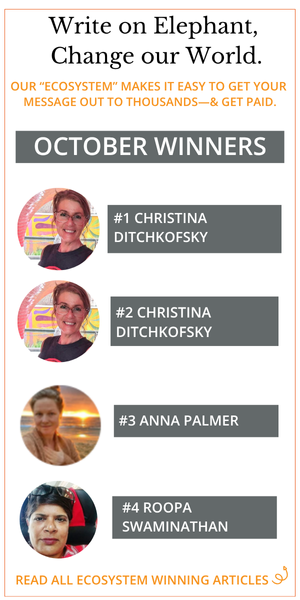
“I think your wounded inner child is driving the bus.”
What the f*ck. I am not 10 years old. But my therapist was insistent. In the aftermath of a marriage that blew up like a supernova, I was at the beginning of my journey to figure out why my relationships always ended in the same disastrous way.
I knew one thing for sure—this was going to suck.
I thought I’d left my painful childhood behind. I never wanted to think about my young, wounded self again. I had escaped to adulthood and wasn’t looking back. But after building a resume of major setbacks and failed relationships, here I was—sitting across from my therapist, facing the realization that in order to heal I’d have to go back to the part of myself I’ve always avoided—the wounds of my childhood.
As the child of an alcoholic family, the dysfunction came from all directions. Trauma came in many forms, both physical and emotional. What hurt the most were the wounds you couldn’t see—the neglect and abandonment. There was no consistency from day-to-day—I never knew what to expect. I was constantly anxious, and I never found comfort or self-esteem. I struggled through childhood praying for a brighter future from a higher power I didn’t believe in.
Those early years of childhood are so impactful—our brains are still developing and we’re too young to make sense of the trauma. Without nurturing and encouragement, we’re left feeling powerless, isolated, and full of shame. We don’t learn healthy coping skills and unknowingly carry this dysfunction with us into adulthood.
I eventually left home and moved 1,000 miles away—far enough to feel detached from my upbringing. A fresh start in a new place with new people. The last abandonment of my childhood came at my own hands, as I locked the hurt and unwanted parts of me away for good and reinvented myself. The child of dysfunction was gone. Unfortunately, that didn’t work out so well.
The story of my adult life was woven with the same threads of dysfunction I thought I’d escaped. I kept repeating my dysfunctional relationships until wrecking my life one last spectacular time before I hit my emotional bottom. Truth is, I may have gotten older, but my wounded inner child had been running the show the whole time.
And the only way to turn my life around was to unlock that painful childhood and heal my inner child.
But I had no f*cking idea how to do that. I was terrified of vulnerability—I equated it with weakness, and reconnecting with my inner child would send me back to the weakest version of myself. It took a lot of therapy for me to find the courage to go back and embrace my inner child with empathy and compassion, connecting with the part of myself on the receiving end of the trauma.
It was one of the hardest things I’ve ever done, but also incredibly healing. I felt more whole and at peace with myself. But I still struggled as I had before, getting triggered, reacting, and making mistakes.
It was frustrating and confusing. As I continued to work on myself, I came to understand that accepting and nurturing our wounded inner child is the beginning of healing, not the end.
What stands between our wounded inner child and a healthy, functional adult is what renowned trauma experts Pia Mellody and Terry Real call our “Adaptive Inner Child.”
Our adaptive inner child is the part of us that dealt with the trauma and figured out how to adapt in order to protect ourselves and survive. And that adaptive part of ourselves is highly intelligent and clever, able to perfect denial to an art form to protect our fragile egos.
We learned self-defeating coping mechanisms based on the avoidance of our pain and our lack of self-worth. Many of us live our lives thinking we’re functional adults, without knowing that we are merely wounded children in adult clothing.
Acting out of our adaptive child looks like this:
>> We’ll people please and manipulate, using control to feel safe in our environment.
>> We see things in black-and-white, unable to appreciate the gray nuances of life.
>> Insecure and reactive, we’ll feel intensely anxious when our fragile sense of self is threatened.
>> We’re perfectionists—we equate flaws and mistakes with worthlessness.
>> We’ll be defensive, unable to admit or take responsibility for our mistakes, fighting to be right and have the last word—winning arguments for the sake of our esteem is more important than the relationship itself.
>> We’ll perceive criticism as an assault, retaliating and justifying ourselves in order to deny our pain and insecurity.
>> If we’re pressed, we’ll evade like a ninja—and if we feel exposed, we’ll lash out in anger or simply shut down.
Obviously, this doesn’t end well. These adaptive strategies can alleviate our discomfort in the short-term, but we end up with a painful, dysfunctional life. And we’ll often develop addictive behaviors in order to numb the pain and avoid dealing with who we really are. We’ll struggle with intimacy, and when adversity hits our relationships we’re in trouble, unable to guide ourselves through the conflict in a healthy way.
If you recognize yourself in that, you’re not alone. It was sobering to realize I had lived my life that way, and I’ve shed a lot of tears over it. It was difficult to accept, but it did explain why my life unfolded the way it did.
I was ready to heal, but healing meant much more than giving our young, wounded inner child a hug. We not only have to nurture that part of ourselves, but we also have to re-parent our adaptive inner child, which isn’t easy because we were never exposed to healthy parenting in the first place.
Re-parenting our adaptive child means learning some basic skills we missed as children:
Feeling empathy and acceptance for our wounded inner child
Learning self-care and self-trust
Physical and emotional nurturing
Setting healthy boundaries
Responding rather than reacting when we’re triggered
Providing enough structure in our lives to meet our needs without shame
When we commit to learning these skills and meeting our own needs, our adaptive inner child begins to heal—and we shift from the immature parts of ourselves to a more mature, functional adult.
But it won’t be easy. Healing our wounded inner children is the work of a lifetime and takes a great deal of courage. But what we get for taking that risk is the chance to connect deeply and compassionately with ourselves, building healthy, fulfilling lives out of dysfunctional ones.
I’m grateful I was brave enough to take the risk—it’s truly transformed my life. I wish you the courage to do the same, to take a chance at a future full of possibilities as beautiful as any you’ve imagined.
~
~


 Share on bsky
Share on bsky




Read 47 comments and reply